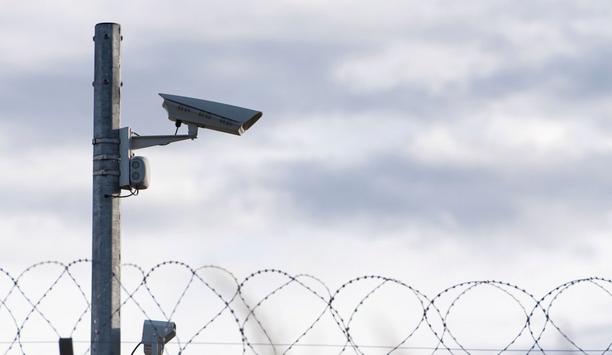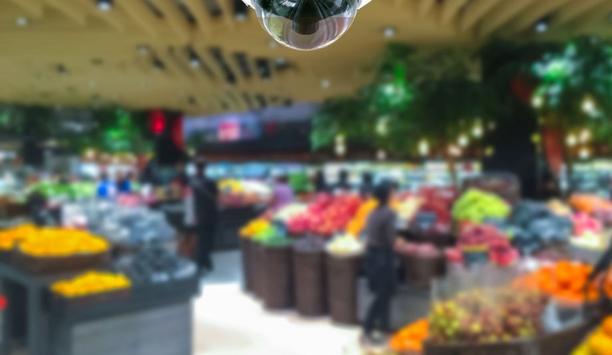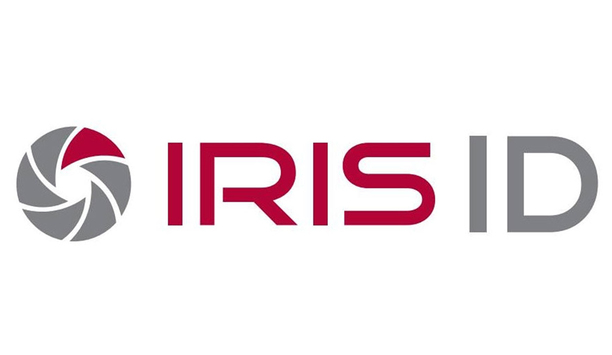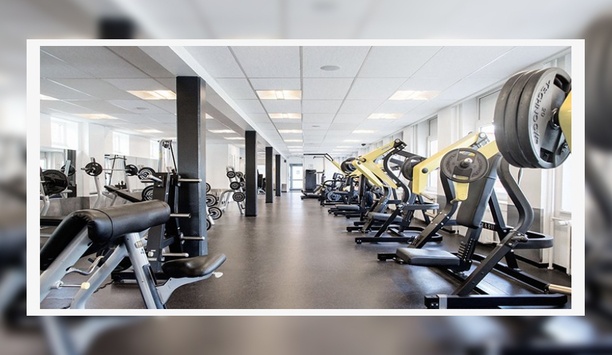The Opel Zoo in Kronberg/Germany, originally known as the “Georg von Opel Outdoor Enclosure for Animal Studies,” provides expansive compounds and enclosures for around 1,500 animals spread across 27 hectares. There are more than 200 species being kept at the zoo, and many of them are endangered. Located on the southern slopes of the Taunus mountain range and offering fantastic views of the Kronberg old town and the Rhine-Main region behind it, the Opel Zoo is one of the most popular leisure and culture destinations in the state of Hesse, attracting around 650,000 visitors per year. One of the zoo’s main draws is its generous new enclosure for African elephants – the only one of its kind in Hesse.
The new elephant enclosure
The new elephant enclosure, which was completed in the fall of 2013, is the zoo’s most ambitious construction project to date. The new elephant house provides its residents with large individual pens. In addition, an indoor run of more than 800 square meters gives the smaller elephants plenty of space to get out of the way of the more dominant ones. Combined with the three outside sections that have a total area of 8,000 square meters, this gives the four residing elephants ample opportunity to both converge and avoid each other when so desired.
Better vantage for critical areas
“During the planning of the enclosure, we focused on both the welfare of the elephants and on the safety of the premises,” explains Dr. Thomas Kauffels, the director of Opel Zoo. “It’s very important to know at any given time where each animal is located, which gates are open and which need to be closed.” The initial plan made during construction was to install a set of pan/tilt cameras in the elephant enclosure. When it came to the implementation of these, however, the camera concept turned out to have several flaws, and Opel Zoo contracted Encom Consulting from Saarwellingen to remedy the situation.
"During the planning of the enclosure, we focused on both the welfare of the elephants and on the safety of the premises" |
Encom Consulting had already worked for the zoo for several years, among others for the installation of multipath transmission systems. A specialist for security solutions and risk management, the company had also installed the zoo’s first high-resolution webcams, which among others monitored and documented the construction of the elephant enclosure. The webcam feeds could also be viewed online on the zoo’s website. When assessing the original camera concept, Encom realised that the planned pan/tilt cameras would not be able to fulfil many of the requirements.
Cost was another important factor. The pan/tilt cameras would have required a large number of expensive optical fibre cables. Optical fibre was particularly needed in the high voltage area to avoid interference. The original concept also entailed a much larger number of cameras in order to cover all the required areas; the new concept required significantly fewer units. For cables in the proximity of high voltage systems, Encom developed a pulse interference elimination process that made it possible to do without optical fibre. Due to the differences in cost and also in quality of security provision, the management at Opel Zoo decided to abandon their original camera concept and instead contracted Encom to implement the network and install the MOBOTIX cameras they had recommended. With these, the hardware costs alone were decreased by almost 30 percent – not counting the significant follow-up cost reductions, among others resulting from lower power consumption and the MOBOTIX solution’s much lower maintenance requirements.
MOBOTIX’s FlexMount cameras
For example, the semi-circular elephant corridor only needed three of MOBOTIX’s FlexMount cameras. The FlexMount is a very versatile model featuring two hemispheric lens units, each of which is connected to the camera processor via a one to two-meter cable. With its twin sensor modules, the camera can look ‘around the corner’; this enables it to monitor a fully hemispheric area. The camera processor outputs two undistorted, high-resolution 180-degree panoramic video feeds.
The current resolution is 3.1 megapixels, which is set to be increased to 6 megapixels in the future. With the installed cameras, the entire elephant corridor can be monitored seamlessly. All it takes is three cameras to simultaneously show all twelve viewing angles on-screen. Each of the cameras features one day and one night sensor covering the same physical area. The cameras automatically select the best camera module to suit the light level, and similarly, the software automatically uses the most suitable exposure settings.
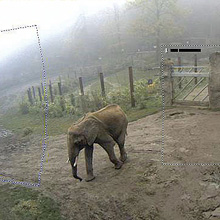 |
| The semi-circular elephant corridor only needed three of MOBOTIX’s FlexMount cameras |
All of the cameras feature highly specialised video sensors for both day and night mode. In the rare event that panning and zooming is needed, this is performed electronically within the video feed. Thanks to the high megapixel resolution, this is usually possible without requiring any degrading interpolation. The zookeepers are thus provided with detail views and other image sections without any mechanical movement of the lens, i.e., the sensor, and therefore without any wear and tear. Because there are no movements, there is no need for a motor, which means there is no risk of mechanical failure and no need for costly maintenance. Before entering the elephant corridor, the keepers can always tell if there are any elephants inside the connecting corridor. This information is provided via a laterally-mounted, fully dustproof MxDisplay.
The same applies for the elephant house’s indoor run. Here, a number of FlexMount and AllroundDual cameras are installed as well. These provide the zoo with a full view of the indoor run right up to the visitor platform, all on the same screen.
Mobotix AllroundDual cameras
As well as the high-up AllroundDual cameras, the outside area also features a number of FlexMount cameras. Thanks to their very small image sensors and up to two meters of distance to connect to the separately-housed camera processor, these could be positioned very discreetly. This is of crucial importance in an elephant enclosure. With other systems, the cameras would have to be installed well outside of the elephant trunks’ reach, which usually means a height of at least six meters.
“Elephants are very inquisitive, and they like to inspect things thoroughly. An elephant’s trunk can weigh up to 200 kilograms, which means the cameras need to be installed in a way that they won’t be damaged by a strong slap,” says Jasper Jasperson. “With this system, the video image sensors were integrated very inconspicuously into our molded rock surfaces. We can now record footage at a comparatively low elevation of just three meters above the ground. For the first time, we can view the elephants ‘eye to eye.’ At the same time, being closer to the ground gives us a more faithful perspective on objects in the distance.”
In designing the cable layout, Encom also paid attention to the zoo’s special requirements, with top priority given to failsafe operation |
Priority to failsafe operation
In designing the cable layout, Encom also paid attention to the zoo’s special requirements, with top priority given to failsafe operation. Because of this, the number of active devices in the field was reduced to the barest minimum. Optical fibre is only used where absolutely necessary, i.e., where extreme distances need to be covered; this isn’t only for cost reasons but also to keep down maintenance.
Ultimately, only two optical fibre cables were needed, both of which are used outside to connect to the watering spots 400 and 500 meters away. All of the other camera locations are connected using direct wide-range copper cables. These cables also supply the MOBOTIX cameras with power (three to five watts). According to the specifications of the originally proposed system, each camera was going to consume 55 watts – that’s more than ten times the amount of power. Even when there is a power failure, the MOBOTIX cameras continue to be supplied from a UPS, ensuring the security feed is never interrupted.
A single 360-degree camera provides a fixed view of the entire outside area of the elephant compound, offering a panorama over 5,500 square meters. This main view is supplemented by further 90-degree cameras for a separate lower section. This way, the keepers can always see where each animal is currently located. As well as for safety and security, Opel Zoo also uses its cameras to research animal behaviour.
In order to minimise intrusive external factors while still providing around-the-clock visual data of the animals, Encom Consulting again recommended the use of hemispheric MOBOTIX cameras. These make it possible to see exactly how the elephants traverse the compound, which routes they take and when they interact. With its special lens, the FlexMount camera provides a full view of almost the entire area, recording uninterrupted footage over many months. Thanks to the hemispheric system, this is possible using just a single camera – with the originally planned pan/tilt cameras, six to eight individual cameras plus ongoing manual repositioning would have been necessary.
For each camera not installed, Opel Zoo is saving four-digit amounts in acquisition, cable, and maintenance costs; this adds up to a substantial difference. Having fewer cameras also means there are less feeds to take up screen space, and resultantly, the remaining camera feeds can be displayed at a much bigger size. In a similar vein, the FlexMount also offers another important advantage: With a multi-camera system, the animals constantly move from one viewing area to the next, whereas with a single hemispheric panorama camera, they remain within the one 360-degree view. They never disappear from the video feed, nor do they double up in overlapping viewing areas. And when the sun is low, all the animals remain fully visible despite the strong backlight. This is only possible because the MOBOTIX camera – in contrast to other designs – does not use an iris.
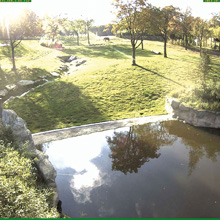 |
| The widescreen panoramic image provides roughly twice the resolution of a standard video image |
The patented MOBOTIX high-tech image processing algorithms inside the camera calculate and correct the complex pixel array, eliminating the need for an iris and its inherent susceptibility to backlight.
The widescreen panoramic image has the same number of lines as a standard video image but provides roughly twice the resolution. The camera-integrated motion analysis software makes it possible to trigger recording in response to predefined events – such as an elephant entering or exiting an area. This greatly speeds up research later on, saving the zoo both employee time and data storage space.
“The free-of-charge MOBOTIX software is so easy to use that our team could start analysing the images almost immediately, producing valuable findings for our daily interactions with the animals, as well as supplying great image material for documenting the animals,” says Uwe Böhme, administration manager at Opel Zoo.
Researching the behaviour of the Rothschild Giraffes
Another set of cameras is installed in the zoo’s enclosure of Rothschild giraffes. In this instance, the focus is less on security and safety than on research, such as the projects being conducted by the Opel Zoo-sponsored Chair in Zoology at Frankfurt’s Goethe University. Endowed Professor Paul Dierkes and his team are making excellent use of modern image-gathering methods in their research, which is focused on the animals’ wellbeing and relies on unobtrusive research equipment.
In this enclosure, six FlexMount S15 and AllroundDual M15 cameras are in use. Both of these models have a resolution of five megapixels. Thanks to the sensors used in these cameras, the zoo’s research team can benefit from outstanding light sensitivity. Additionally, the sensor technology offers a frame rate of up to 30 frames per second, as well as extreme zooming. Not only does this produce sharper images, it also allows for the cameras to be positioned further away from the areas to be monitored. Accordingly, it was possible to install the cameras well out of the giraffes’ sight. The M15 is a day-and-night camera; depending on the configuration, both day and night recordings can be made simultaneously, which is particularly valuable in poor lighting conditions or in complete darkness. Encom is also testing specially-designed animal camouflage housings with optical shutters – despite fully blending in, they still output a high-quality colour image. This is making it possible to capture footage that was previously either impossible to get or would have required a lot more effort.
Thanks to the sensors used in these cameras, the zoo’s research team can benefit from outstanding light sensitivity |
Mobotix cameras with thermal sensors
For testing purposes, the newly-developed MOBOTIX cameras with thermal sensors are being deployed in both the elephant and giraffe enclosures. With the thermal sensors, the animals’ body heat can be traced visually. The cameras can therefore detect movements from distances of up to 400 meters very precisely, even under challenging lighting and weather conditions. The future of thermographic cameras in animal research looks very promising. For example, they can be used to display images of animals living in caves or nesting without intruding on them at all. There are also interesting possibilities in the area of preventive veterinarian diagnoses.
Cost effective with enhanced safety
As well as the animal enclosures, the zoo shop and ticketing area are also being secured using MOBOTIX cameras. “We’re very happy with our camera systems, particularly with how Encom managed to adapt the complex camera programming to our needs. The same applies to the excellent MOBOTIX cameras, which are wonderfully sturdy,” says Uwe Böhme. As well as the increased safety and security provided by the new camera concept, the zoo also benefits from having significantly fewer power cables than originally planned for, and power consumption has been reduced to a mere tenth.
Similarly, the risk of cameras failing has also been reduced by a factor of ten. “Compared to our original pan/tilt camera concept, we’ve now got a better set of features and still managed to save around 30 percent on hardware and software,” says Böhme. “That doesn’t even include follow-up costs, such as the maintenance that would have been needed over the years; with the MOBOTIX cameras, this isn’t needed at all. We’ve already started planning for further camera systems around the zoo.” One of the next projects is to test further motion analyses for the colour-based display of animal routes through their compounds.





